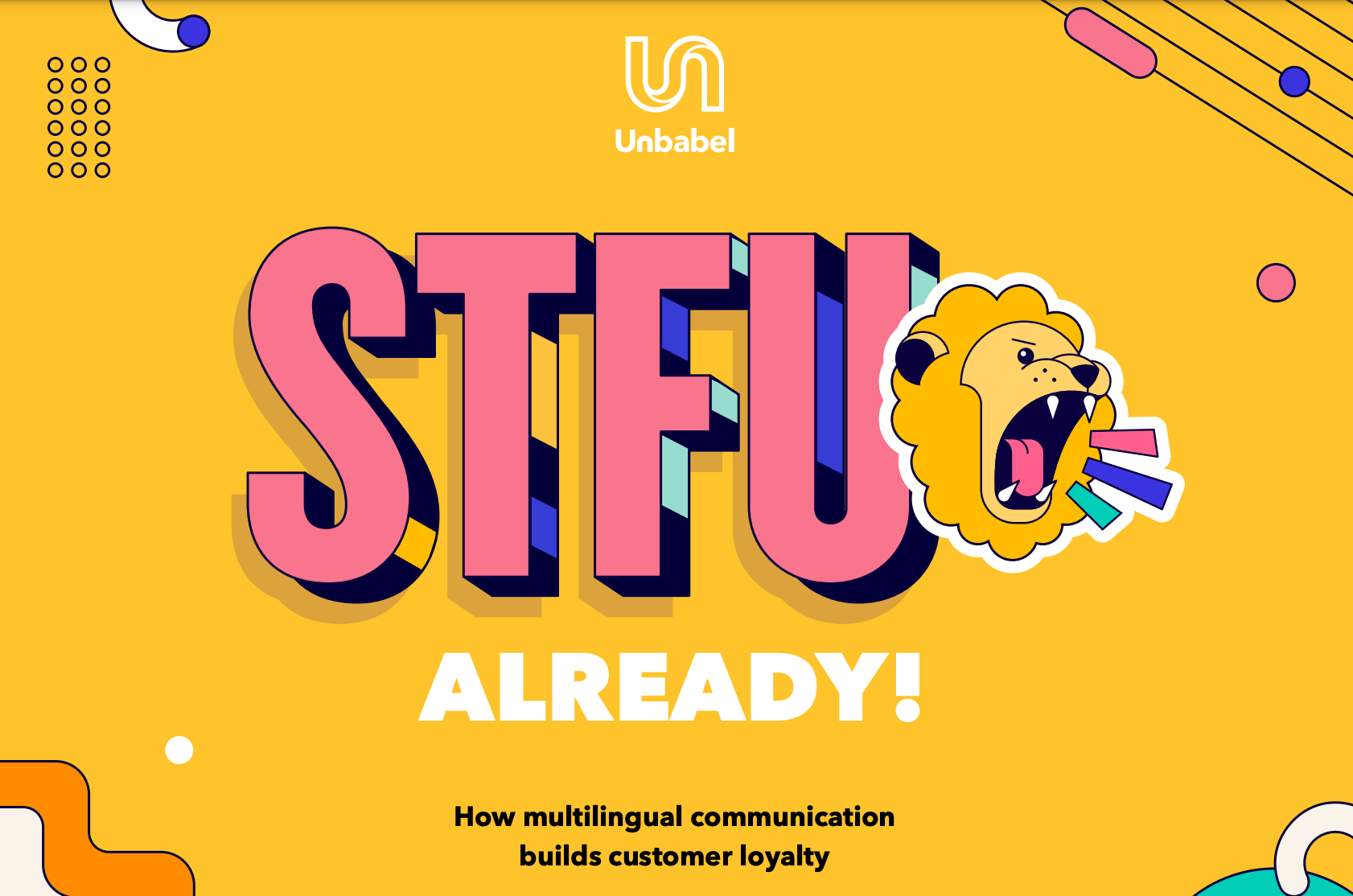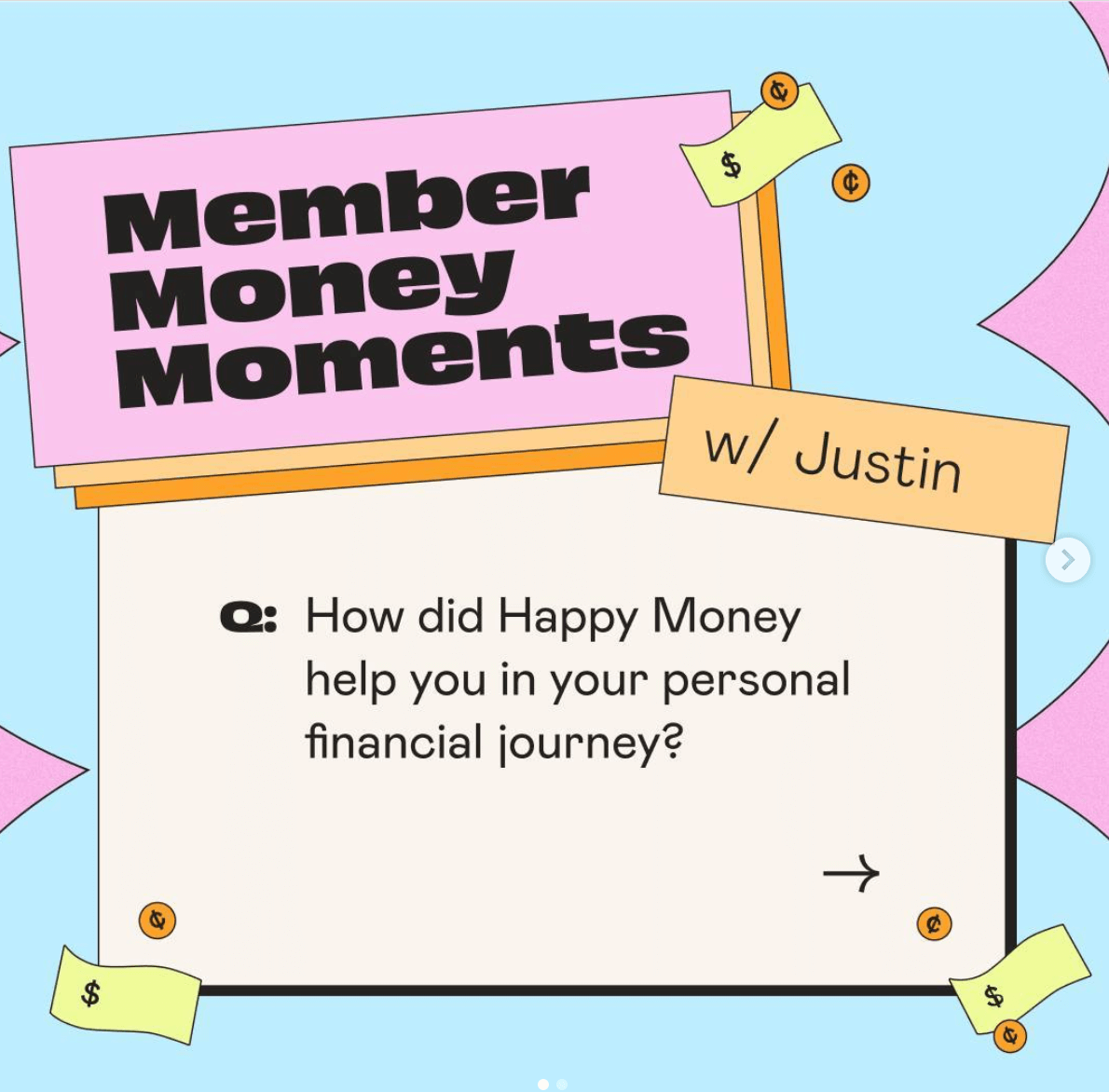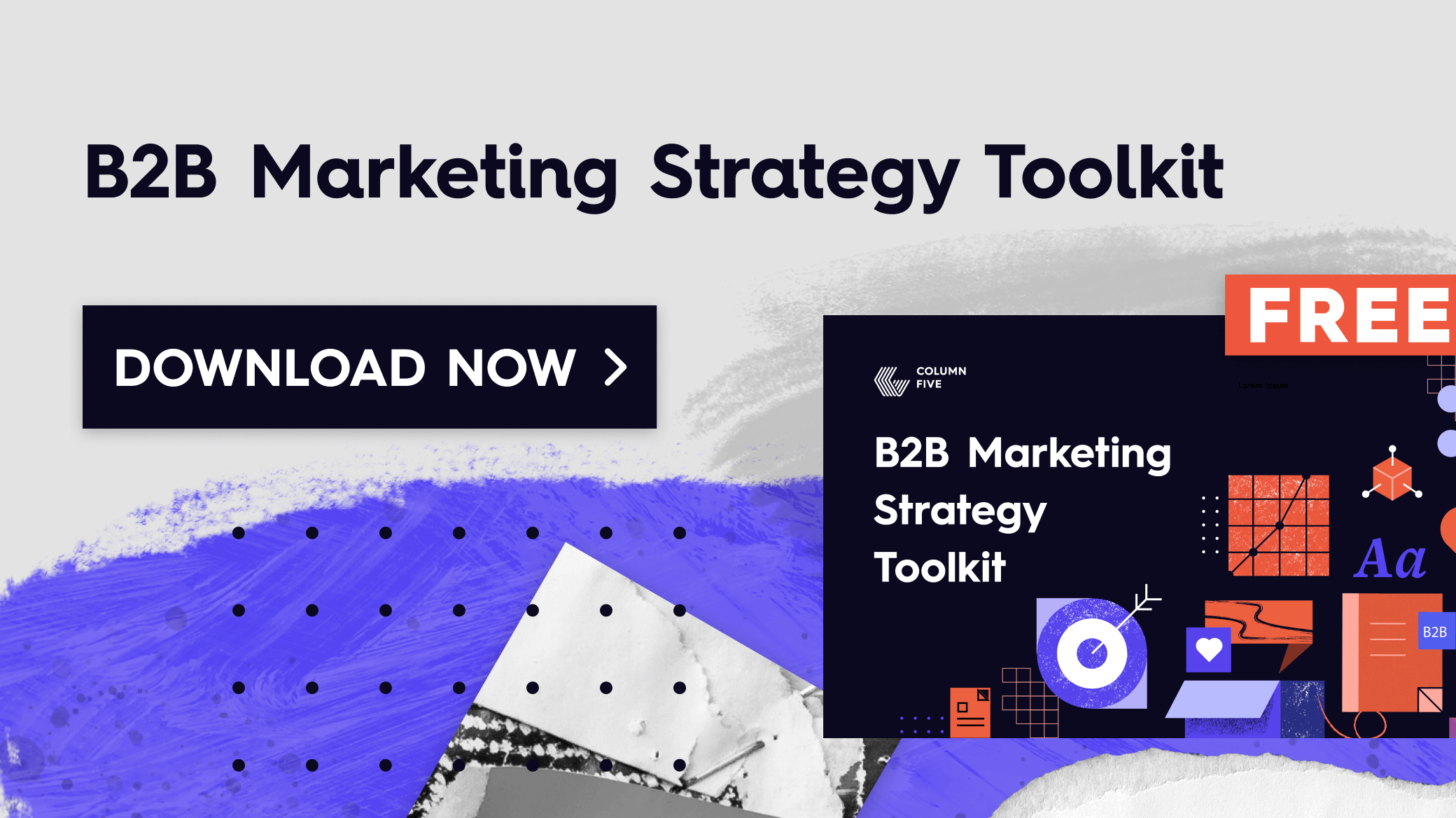The marketing rules have changed. Whereas traditional advertising was once the way to connect with an audience, in the digital age, people are less wowed by that type of interruption marketing. Today, they’re drawn to engagement marketing, where brands focus on relationship-building through content. Enter brand storytelling—the buzzword of the digital age.
But what does brand storytelling really mean? Why does it matter? And how do you actually do it? Lucky for you, you’ve come to the right place.
With over a decade in the digital marketing game, we’ve helped some of the world’s biggest brands tell their brand stories—and, now, we’re going to help you do it too. In this guide, we’re diving into everything you need to know about B2B brand storytelling to help you tell your story effectively, connect with the right people, and win your market. Let’s dive in.
TOC
- What Is Brand Storytelling?
- What Are the Elements of Brand Storytelling?
- Why Is Brand Storytelling Important?
- How to Do Brand Storytelling
- How to Make Sure Your Brand Story Lands
What Is Brand Storytelling?
In short, brand storytelling is the act of telling the story of your brand through content. By authentically communicating who you are, you can increase brand awareness, make genuine connections with your audience, and build a strong community of lifelong fans.
What Are the Elements of Brand Storytelling?
There are many ways to tell stories about your brand, and each represents a different facet of your identity. Whether you’re telling stories about how your company started or how you’ve successfully helped your customers, any story you tell about your brand contributes to your larger brand story.
That said, there are a few general categories that represent each pillar of your brand story.
- Who you are: How your company came to exist, as well as your vision, mission, values, and culture.
- What you do: The product or service you provide.
- Who you do it for: The people you want to help.
- Why you do it: Your larger goal beyond what your product/service does—how you really benefit your customer (e.g., your app helps people easily book vacations so that your customers can truly relax).
- How you do it: Visibility into your product, production, people, or process, including how you are evolving and working to create the best product/service for your customers.
The way you tell your brand story may vary, depending on your marketing strategy. But pretty much every content format is a fantastic tool for brand storytelling, including but not limited to:
- Articles
- Case Studies
- Data visualizations
- E-books
- Explainer videos
- Infographics
- Interactive infographics
- Microcontent
- Motion Graphics
- White papers
- Video
In some ways, it doesn’t matter how you tell your story. What matters most is that it is authentic and honest and resonates with the right people. The good news? If you do brand storytelling well, it automatically will.
Why Is Brand Storytelling Important?
For many years, interruption marketing reigned supreme (aka traditional advertising, where a brand interrupts people to talk at them, as opposed to with them). People are tired of that dynamic, as it makes them feel like a faceless dollar bill targeted by a faceless corporation. Now, we are in an era of engagement marketing, where people want honest, authentic brand relationships built on mutual trust and respect. They want to align with brands and engage with them on a personal level—like a trusted friend or resource. This is why brand storytelling has become the most powerful way to compete in the marketplace.
Brands that master storytelling through content marketing on social platforms and other channels will have a leg up in many ways, as storytelling has far-reaching benefits both inside and outside your company walls.
1) Brand storytelling makes you stand out from your competition.
What makes you unique? Whether it’s your product design or service features, there’s a reason you’re different—and people want to know what it is. You might think it’s self-indulgent, but the most integral elements of your brand story—how you came to be, grow, learn to do good work, and choose what you stand for—are more interesting to other people than you think. If you can actively spotlight the things that make you unique through your content, you can easily outshine your competitors.
2) It humanizes your brand.
Humans want to interact with humans. Luckily, your brand is made up of a variety of unique, interesting, and engaging people. By peeling back the curtain and sharing that part of your brand story, you make it easier for people to feel connected to the people behind your brand and, most importantly, trust you. (Brands that focus their corporate storytelling on product features miss a huge opportunity to make this personable connection.)
3) It helps you attract the right people.
People (both your customers and potential employees) expect brands to be outspoken and demonstrate their values. Brand storytelling lets you communicate more than what you do; it helps you show people what you believe. When you articulate your values, you make it easier for customers to align themselves with you—and you can better entice the talent who might want to work for you.
This is yet another reason why brand storytelling can help make you more competitive. It’s not just about the customers you attract; the employees you attract are the ones who will drive your innovation and success from within. Telling a brand story that attracts those gem candidates can, in many ways, fuel your brand’s future success.
4) It helps you communicate your value.
Conventional wisdom suggests there are two ways to compete as a business: price and value. In B2B, competing on price doesn’t just sound awful; it’s a race most brands can’t run forever, even if they wanted to. In most industries, there’s always someone younger, scrappier, with a leaner team, who can afford to charge less for something similar to what you offer. Does it matter if their offering isn’t quite as good? Nope. Unless you scale like Amazon, it’s a race to the bottom.
On the other hand, competing on value can keep you in the game. Think of the value you provide. What do customers experience? What do they really “get” when they buy from you? Brand storytelling helps you reinforce this value at every point of the buyer journey.
5) It gives you more agency.
One of the more frustrating things about your brand story is that you don’t have total control over it. Your story is partly what you communicate and partly how people perceive what you communicate. While that may be frustrating, it’s important to take ownership of what you can control. If you don’t promote your brand story, people will write their own narratives about you—or, worse, disregard you entirely.
“Authority isn’t bestowed to the entrepreneur with the best message but the entrepreneur most willing to express it.”
—Dan Martell, Founder of SaaS Academy
We live in an increasingly transparent world. This is, for better or worse, a by-product of the Internet age. That’s why it’s much better to develop your brand’s story by design (personally, and with intent) than by default (whatever the Internet conjures up).
How to Do Brand Storytelling
So, how do you share your brand story? For marketers, the answer is content. Every piece of content you create tells a part of your story, from the smallest tweet to a huge white paper. If you can build a strong content infrastructure that provides a steady stream of brand stories to multiple audiences on multiple platforms, you will maximize your reach and create more moments to connect with the right people. But how do you do that? Here are our best tips to tell your story well.
1) Start with your brand heart.
One of the biggest reasons brands struggle to tell a clear or compelling story? They don’t actually know who they are. This is why you need to start with your brand heart. Your heart is the core of who you are, comprised of your purpose, vision, mission, and values. These core principles are the foundation of your brand story. They fuel the decisions you make about your business, the way you show up in the world, and the way you interact with your audience. They can also be great fodder for future storytelling, but you need to have them articulated on paper to ensure your brand is aligned and telling an authentic story about who and what you are.
Tip: Download our free brand heart workbook to document your purpose, vision, mission, and values.
2) Document your brand messaging.
The secret to telling a strong brand story is telling a clear, cohesive story—consistently. This is crucial for a few reasons.
- You want to be memorable. The more consistent you are in the way you present yourself, the easier it is for people to identify and remember you.
- You want to create a seamless brand experience. You want to move people along the path to purchase as easily and as smoothly as possible. Disparate messaging can create speedbumps. (In fact, this is a common thing we see with our B2B clients.) If your marketing and sales messages aren’t aligned or telling the same story, people will second guess your brand—and do so at crucial stages.
- Your story is more impactful if it’s easy to understand. Clarity is incredibly important. You don’t want to confuse your audience with conflicting messaging, nor do you want to bore them to death by droning on and on. Clear brand messaging helps you tell your story concisely.
How do you describe your product/service? What makes you different from your competition? What are your key selling points? How do you ensure that brand creators can speak about these things confidently? By documenting your brand messaging, you will have compelling answers to everything a customer could ask.
Tip: Use our free brand messaging framework to identify the key stories you want to tell and the language you want to use. This will give you a strong foundation to brainstorm content ideas later.
3) Identify your audience.
To be a good storyteller, you need to understand your audience: who they are, what they want to hear, and how they want to hear it. Of course, you are not speaking to one homogenous group—especially in B2B. You may be speaking to people in different industries or even generations. Thus, you need to intentionally segment and separate.
- Create Personas and Ideal Customer Profiles. In B2C, you would only create marketing personas. But in B2B, you need to identify both the types of companies you want to target (aka Ideal Customer Profiles), as well as the individual personas at those companies. Doing this work is tedious but worth it. When it comes time to brainstorm story ideas, your personas can help you vet your ideas and identify the best stories for different stages of the buyer journey.
- Map your buyer journey. One core thing to remember is that brand storytelling is not selling. Selling can be part of your brand story at the appropriate time, but if you come on too strong too soon, you will turn people off. Instead, you need to understand your customer’s headspace at every stage of the buyer journey and identify what parts of your brand story they’ll want to hear about at each phase. This is an immensely helpful exercise to identify the right messaging for the right time.
Tip: Use our guide to create ICPs and personas to properly identify and document each part of your audience, and use our free buyer journey template to identify what messages they need to hear at what point.
4) Establish your branding.
One of the often-overlooked aspects of brand storytelling is the brand part. Your brand voice, your personality, and your visual identity all tell their own story about your brand, so it’s important to present yourself authentically and consistently in every piece of content you create.
- Determine your brand voice/personality. It is way too easy to default to boring marketing speak, especially in B2B marketing. Why do so many brands sound the same? Because they haven’t identified (or don’t know how to use) their brand voice.
- Build visual identity guidelines. Your visual language is the aesthetic experience of your brand, and it communicates a lot about who you are. Everything from your logo to color palettes can affect how you present yourself, so—just like brand messaging—you want to develop a consistent, on-brand visual language that creates a cohesive experience.
Tip: Use our free templates to find your voice and personality, and use our free guide to design a brand identity. Most importantly, after you have these elements locked down, create brand guidelines to help content creators stay on brand.
5) Brainstorm ideas around your story pillars.
Now that you’ve laid the foundation of your brand you can do the fun stuff: brainstorm unique and creative ways to tell your brand story. There are many ways to do this, but we find that one of the easiest hacks is to brainstorm ideas around each pillar of your brand identity (who you are, what you do, who you do it for, why you do it, and how you do it).
Want your content to connect?
Educate, entertain, or inspire.
Here, we’ll walk you through a number of ways to do that, as well as handy examples of what each type of brand storytelling can look like in real life.
PILLAR 1: WHO YOU ARE
- Tell stories around your values. Since you’ve clearly defined your brand heart, you know exactly who you are and what you believe in. Turning those values into content is a great way to show people what you care about and create a connection based on those shared values. See examples of how smart brands turn their values into content.
- Tell stories to your employees and future employees—not just your customers. According to Pew Research, 57% of people who quit during the Great Resignation did so because they felt disrespected at work. The more you tell stories about the people behind your brand (and celebrate them), the more you can cultivate a sense of belonging—and help customers feel connected to your employees too. To start, here are 7 easy ways to showcase your people and culture on social media.
Example: We helped Dropbox build their talent brand through creative brand storytelling that showed potential employees what #LifeInsideDropbox was all about.
PILLAR 2: WHAT YOU DO
- Tell stories about what makes you different. This is where your brand messaging comes in handy. Having crafted clear and concise messaging about what you do and what makes you different, think about story ideas that support each talking point.
Example: To help educate small businesses about who Unbabel is and what they do, we executed a bold and edgy campaign that would stand out from their competition. We told this story through various formats, including a hero video, eBook, blog articles, social media content, the eye-catching interactive game Unbabel It, and more.

PILLAR 3: WHO YOU DO IT FOR
- Use empathy to think about what your audience needs to hear. Put yourself in your customers’ shoes, and give them content that is relevant to their life. Whether it solves a problem, gives them a fresh perspective, or helps them do something more efficiently, empathy is your biggest storytelling tool. Try these tips to turn your audience’s pain points into content, and see how these brands put empathy to work.
- Tell strong customer success stories. If you want people to buy into your brand, they will often want proof that you’ve helped other people like them succeed. See our best tips to turn customer success stories into compelling narratives (because, yes, that is its own art).
- Create stories with your audience. Sharing your story is important, but giving the mic to your audience can be incredibly powerful. Find out how to create user-generated content that builds community.
Example: Happy Money shares real client success stories through Member Money Moments— simple, bold, and eye-catching graphics on Instagram. It’s a simple way to showcase how the brand helps clients while letting customers say it in their own words.
PILLAR 4: WHY YOU DO IT
- Tell your origin story. People want to know how your company started, so share your beginnings—the good, the bad, and the embarrassing. (If you’re curious to know how we got to this point, here’s how we built C5.)
- Talk about what excites you in your field. People want to connect with passionate people. There’s a reason you got into this business, so share stories about what drives you. This type of transparency is a great way to cultivate authentic relationships with your community.
Example: We launched the Best Story Wins to talk about B2B marketing, ask industry thought leaders about their challenges, and share our enthusiasm for brand-building. This is just another way for us to connect with our audience and share our expertise.
PILLAR 5: HOW YOU DO IT
- Share lessons you’ve learned or ways you’ve failed. If you want to form a closer relationship with your audience, you need to be open and honest. If you’ve effed up royally (or learned a valuable lesson), that vulnerability and transparency can help you meaningfully connect with others, especially if you’re helping them avoid the same mistakes. (For example, find out how we decided to change our own content strategy and increased sales 160%.)
- Share behind-the-scenes. People always want to see how the sausage is made, and there are all sorts of ways you can give them a peek behind the curtain: Q&As with team members, live streams, articles, etc. In fact, your team can sometimes be the best source of content. See our tips to turn your fellow employees into brand storytellers.
Example: Zendesk shares plenty of expert content, but creating that content isn’t always easy. There are flubs, bloopers, and more. Zendesk shows off its charming personality by actually sharing those bloopers in an entertaining Instagram reel. Not only does this give you a sense of their fun brand personality but it helps people see that even the pros mess up sometimes.
View this post on Instagram
For more inspiration, see how these brands tell great brand stories (even if their product/service is less than exciting), try these 10 brainstorm prompts to tell your brand story, and find out how we helped Happy Money reach millions of people by telling their brand story.
That said, we know that sometimes your creative brain isn’t working, so we’ve also compiled a handy brainstorming template to help you fast-track your storytelling. Fill in the blanks, and you can generate a month’s worth of content ideas in under an hour.

6) Optimize your Content.
Whether your content is meant to inform, delight, or entertain, show your audience you value their time and attention by presenting it in the right package and making it as easy as possible to consume.
- Choose the right format. The most important goal for every piece of content is to communicate your brand story as efficiently and effectively as possible. Therefore, choosing the right format is vital. You might get caught up in trying to produce the flashiest, trendiest type of content, but this is a disservice to your audience. See our guide to 13 types of B2B content marketing to find out which format might be best for your story.
- Tailor your story for the channel. We’ve seen great pieces of content crash and burn because they didn’t work on the platform (e.g., an infographic that was rendered too small on a blog, or a video that was too long for Instagram). Different channels demand different kinds of storytelling, so match your storytelling format to the channel. You can also maximize your reach across platforms by marketing a single piece of content to different audiences.
- Partner with other people. Your owned channels are a great starting point to share your content, but it always helps to increase your reach through publishing partnerships, syndication, or cobranded work. Find out how to partner with industry publications to create custom content.
- Make it shareable. You don’t want to be the only one telling your brand story. Encourage your audience to share your story by making it easy to do so. Working social buttons, proper dimensions, SEO optimization, hashtags—consider anything you can do to foster engagement. For more tips, find out how to optimize your blog for your publishing and how to optimize your infographics for SEO.
How to Make Sure Your Story Lands
No matter how much budget you have to spend on marketing, if your story isn’t authentic, it won’t resonate with the right people. To ensure your story resonates—and makes the most impact—here are a few more tips.
- Build a strong content strategy. Did you know that 60% of B2B marketers don’t have a documented content strategy?! Without a strategy on paper, it’s hard to create good brand storytelling. If this is something you still need to do, use our free content strategy toolkit to get your goals on paper, brainstorm the right story ideas, and get real results.
- Start emotional, close logical. One of the biggest myths in B2B marketing is that it isn’t emotional. Wrong. The goal of telling a good brand story is to connect with your audience—and emotion is the key to doing that. First, focus on creating that emotional connection with your audience up front, then you can get more into the weeds with more sales content as they progress deeper into the buyer journey. Find out how to optimize your buyer journey to start emotional, close logical, then follow these tips to write copy that hooks your audience.
- Sweat the small stuff. Your confirmation email, your password reset message, your CTAs—every piece of content is an opportunity to show people who you are and what your brand is about. Take a fresh look at those little things and pack them with personality. Start with our tips to optimize your CTAs and emails.
- Experiment often. Your story isn’t static; it changes as your company grows and expands, brings on new team members, and breaks into new markets. A new initiative can spawn a whole new campaign to send your story far and wide, so don’t be afraid to try new things.
- Stay educated. The best way to be a better marketer is to keep up with what the best in the industry are doing. Subscribe to our Best Story Wins podcast to hear how B2B marketers are building winning brands, sign up for our newsletter for weekly tips, or check out our free resource archive for tools and templates to work smarter.
Of course, doing this deep work takes brainpower and perspective that you don’t always have on tap. If you need a little extra guidance to get your house in order, find out what to look for in a content agency, take a look at our brand strategy FAQs, or reach out. We’d love to help you tell a memorable brand story that turns people into lifelong fans.





